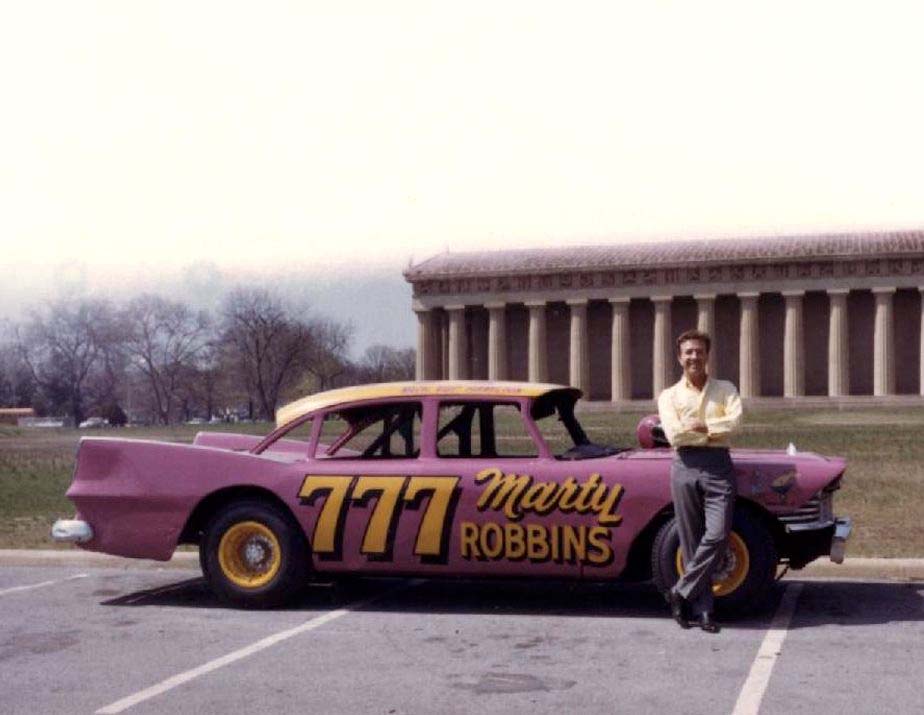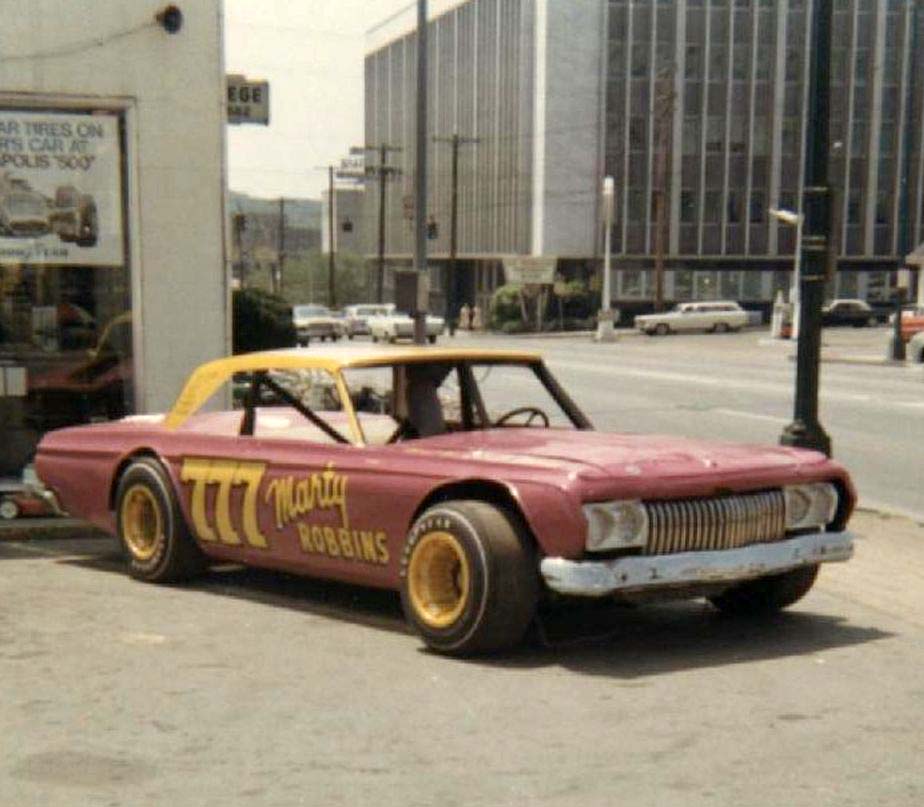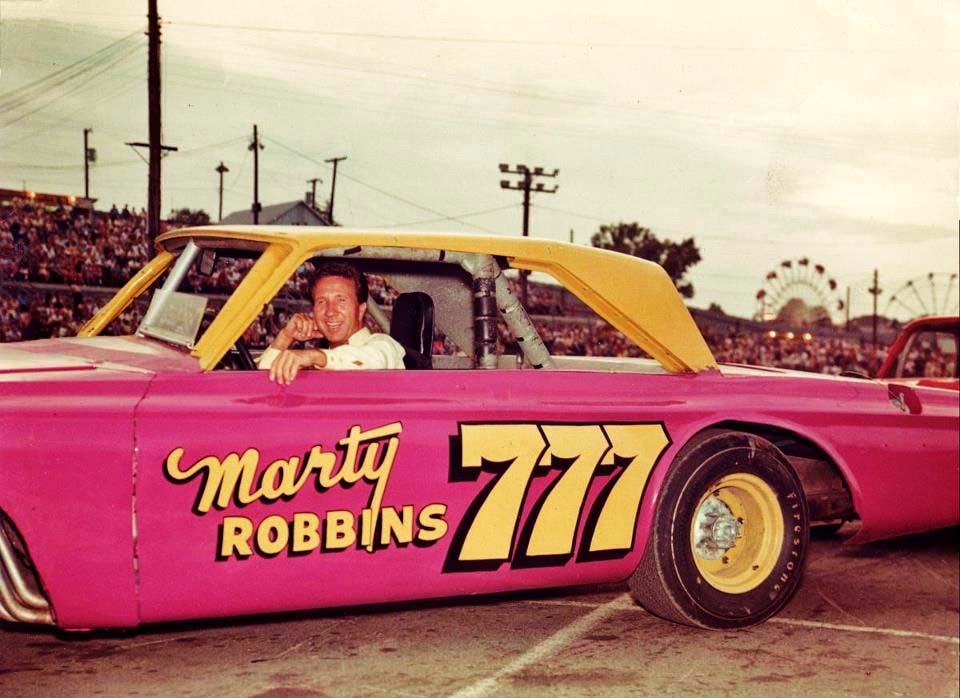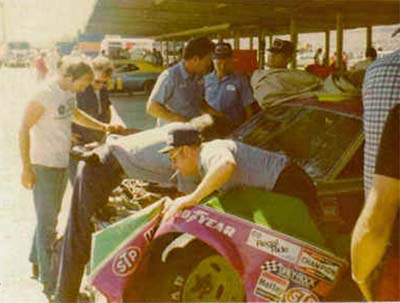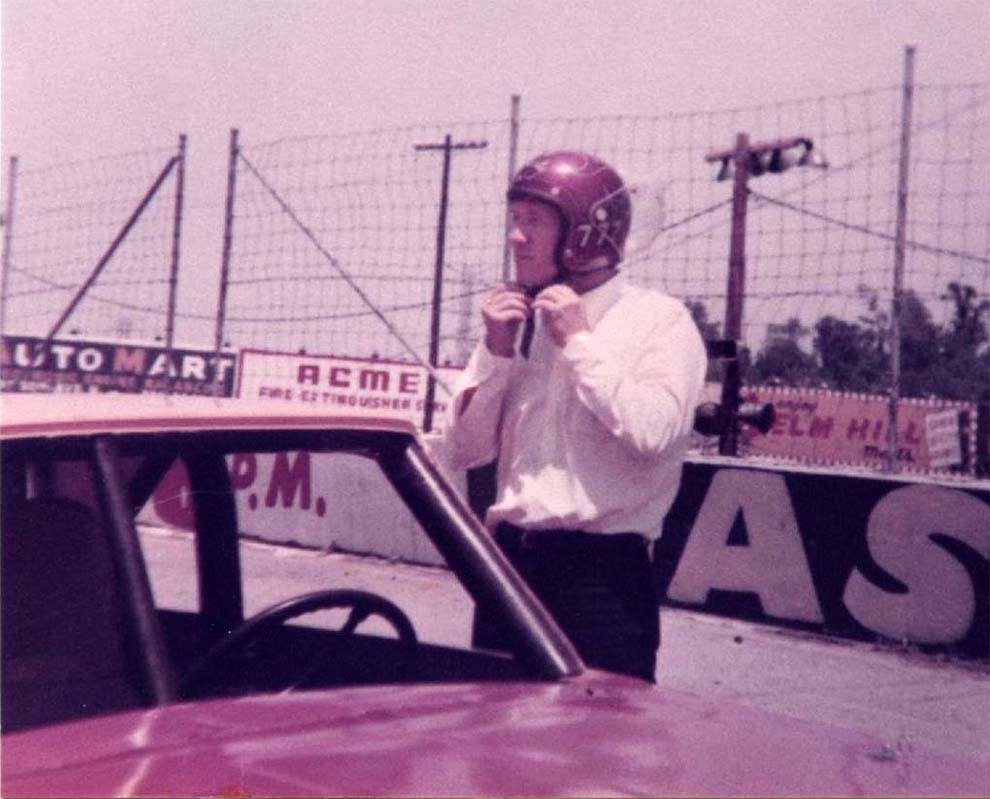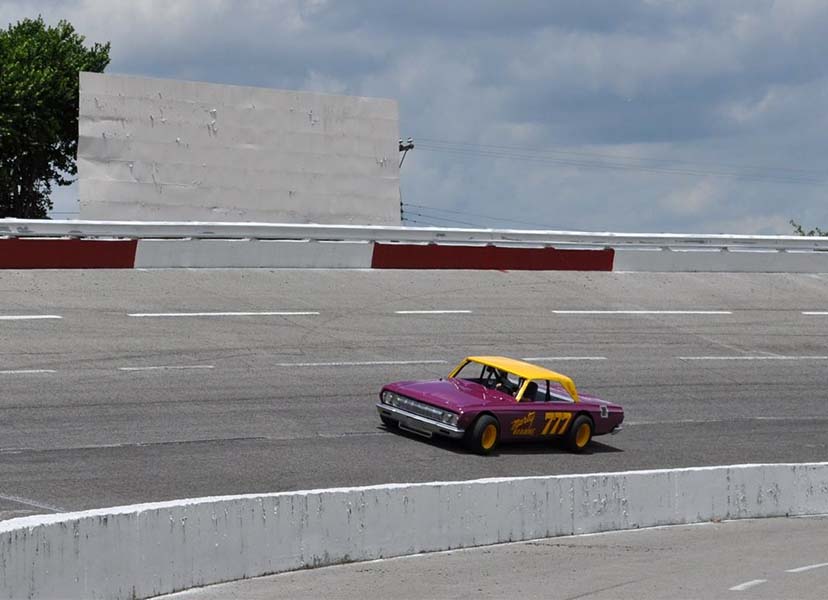Robbins started out racing as a hobby in the late 50s, racing micro midges. In the early sixties, he moved up to full-bodied cars, piloting a purple and yellow 1962 Plymouth (the first car numbered his favorite short track number, 777) at the old Nashville Fairgrounds. Robbins would often have to rush away from the track after finishing the feature to make it to the Grand Old Opry in time for his Saturday night show.
Marty competed for a great deal of his racing life at Nashville Speedway, regardless of his big -time racing in NASCAR. Judging from how much time he spent there, he surely loved the old short tracks.
NASCAR Career:
It was at Nashville that Robbins made his NASCAR Grand National (now Sprint Cup) debut in 1966, finishing 25th after falling out due to an oil leak. While continuing to compete at Nashville (and, of course, doing that singing thing on the side), Robbins would compete in 35 NASCAR Cup events between 1966 and 1982.
His best finish came at Talladega in 1974, as he piloted his number 42 purple and yellow Dodge to a ninth place finish. It was also at Talladega, a few years before, that Robbins “confessed” to being a “sinner”. That was in that super speedway race back in May of 1972.
As the story goes, Robbins started in ninth position. After running with the lead pack all day, Robbins eventually finished 18th, and was to be named rookie of the race. But after the event, Robbins drove right to the impound area, and asked the officials to check the carburetor. Sure enough, the carburetor restrictor plate had been removed from the Dodge. Robbins had turned himself in. He was relegated to a 50th place finish, and fined $250. Robbins would later say in interviews that he wanted everybody to see him pass the leaders “just once”.
Despite being only an occasional competitor, Robbins was always a driver to watch. He recorded six top ten finishes over his career, including a seventh in the 1971 Southern 500 at Darlington, a 10th at Texas World Speedway in 1972, and an eighth at Daytona in the Firecracker 400 in 1973.
Robbins suffered a particularly hard crash at Charlotte in 1974 that left him injured. As a crash unfolded in front of Marty on the front stretch, he chose to turn into the wall at around 160 miles an hour rather than to T-bone the stalled car of Richard Childress. Robbins came away with a broken tailbone, broken ribs, 37 stitches to the face, and two black eyes.
Back in the day, if you wanted to show your mustard to the other drivers, one of the things you could do is work on your own race car. “Sure, Marty works on his car,” Richard Childress once told reporters. “Just the other day I saw him walking around with a can of wax getting ready to shine her up.”
Marty was a Mopar man and competed in a total of 35 NASCAR races and logged 6 top ten finishes. “You know,” Robbins joked in 1975, “I could win any race I entered. But as soon as I did, Cale Yarborough or Richard Petty or somebody would pick up a guitar and start singing. So I let them win out there.”
More on the 1974 Charlotte Race:
It was no laughing matter though on October 6, 1974 during the Charlotte 500 when Richard Childress and three other drivers wrecked along the front straightaway on the 2nd lap of the race.
Marty Robbins turned his purple and lime green #42 Dodge onto the straightaway doing 160 mph and was shocked to find four cars completely blocking the race track with nowhere for Marty to go.
Known mostly as a musician and performer, Marty Robbins always had to earn the respect of the NASCAR world. But how Marty would handle himself, barreling down on the side panel of Childress’s wrecked car in the middle of the Charlotte Speedway straightaway would earn Marty Robbins all the respect he would ever need from his NASCAR driving peers.
“The only thing I knew was that there were people in those wrecked cars in front of me and I couldn’t hit one of them because they’d probably not walk away from it,” Marty explained.
So what did he do? “I looked down the track and saw Marty coming right at me,” Richard Childress recalls. “I knew if he hit me in the driver’s side I’d either be mangled badly or killed. There was no way of me escaping injury and no way out of his path. Then I saw something I am still not sure I can believe. Marty turned the wheel of the car right and it veered into the concrete wall.”
With a split second to make a decision, Marty Robbins decided to risk his own life by plowing 160 mph into a concrete wall instead of plowing into the pile of cars. The crowd fell into a hush for a full minute until finally Marty Robbins could be seen emerging from the mangled #42 Dodge. The crowd let out a roar as Marty boarded a stretcher from an ambulance and was taken to the infield care center.
He was later transferred to the Charlotte Memorial Hospital where he received 32 stitches to close a gash between his eyes (see picture above). He also suffered two broken ribs and a broken tailbone.
After the race, a NASCAR official was quoted saying, “What he (Marty) did out there today saved at least one life and probably kept some other drivers from being maimed. He could have killed himself moving into that wall that way. But in the split second that counted he chose to possibly give his life over hurting somebody else. I don’t think you can be much more of a man than that.”
Richard Childress was quoted after the race saying, “There is no doubt in my mind I wouldn’t be here talking to you right now if Marty Robbins hadn’t risked his life to save me.”
Later:
While racing had dealt him a tough blow at Charlotte, competing in NASCAR may well have saved his life later on. Six months after suffering a heart attack while performing on stage in Ohio, Robbins went to his personal doctor for a routine checkup to be cleared for racing. As it turned out, the checkup showed he had two arteries completely blocked, with another 75-percent clogged.
But Robbins would still return to racing even after bypass surgery. It would continue to be his hobby for the rest of his life. Robbins’ last race came at Atlanta in November of 1982. He died of heart failure one month later.
Robbins was one of a few high profile celebrity racers who excelled in the sport, along with the likes of Paul Newman, Steve McQueen and James Garner. But his unique personality and sense of humor won him friends who didn’t think of him as a singer turned sometimes race car driver. To them, he was a racer through and through.
*Parts of this story are from “Marty Robbins, the Singing Racer”, by By Brandon Reed (June 4, 2008 edition of The Jackson Herald).



